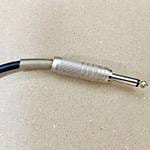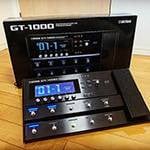

So, what’s today’s topic?
Whooosh!
Whooosh?
Whooosh whooosh?
Huh? What’s that? A summer BBQ perhaps?
Nope, freedom!
Freedom? You’re always free, aren’t you?"
Exactly!
You do realize that, huh?
Well, sort of... but there’s a hint: summer vacation!
Oh, I got it! Summer vacation and freedom... you’re talking about a free research project, right?
Bingo!
That’s a roundabout way to get there...
I was thinking about what kind of theme would be good for a sound-related independent research project.
Are you going to submit this to Sound House? This is a column, though... well, in a way, it does have an aspect of an independent research project... maybe? So, what’s the theme?
Body measurements!
Huh?
Even though it’s my own instrument, I surprisingly don’t know much about its weight or size.
That’s true... I can feel that this one is heavier than that, or that this is a short scale so it’s a bit shorter, but that’s about it.
Right! For independent research, you usually measure things like plant growth, right? Something like that.
That vibe, huh? Anyway, feel free to go ahead.
Alright! Let me introduce the most important piece of equipment for today! Here it is!
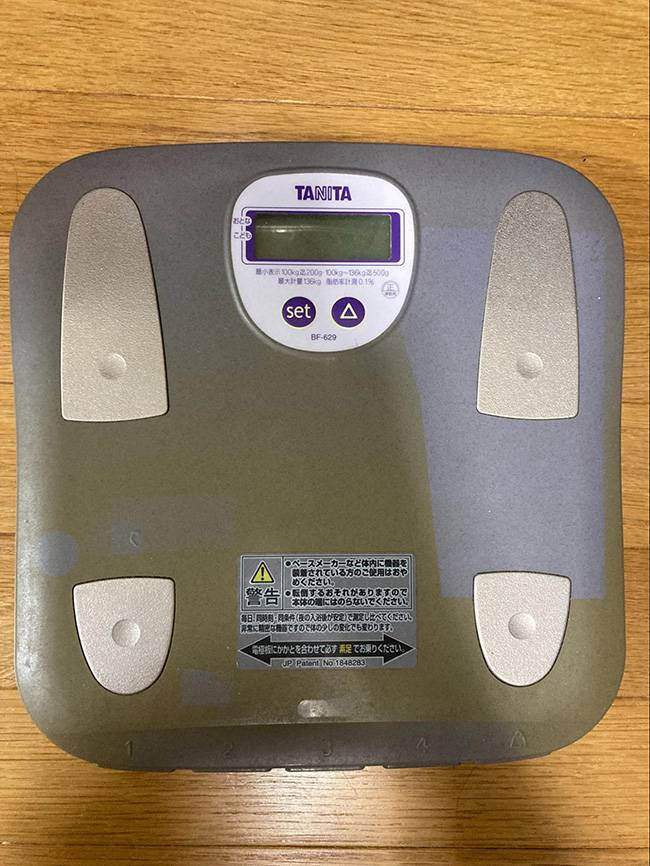
A Tanita scale!
Yes!
The model number is BF-629!
I don’t know about that! Um, this is the kind of scale people normally use, right?
Yes! It’s the one I use every day. But when I tried putting a guitar on it, I was able to measure it, so that’s how I came up with this theme!
So you just tried it out...
Let’s start with a typical electric guitar, the Fender Telecaster!
The controls are simple and straightforward, aren’t they?
Yeah! But it’s not just any Telecaster, it’s a Telecaster Custom!
Even so, it’s still a simple build.
Right! Let’s measure it. Here we go.
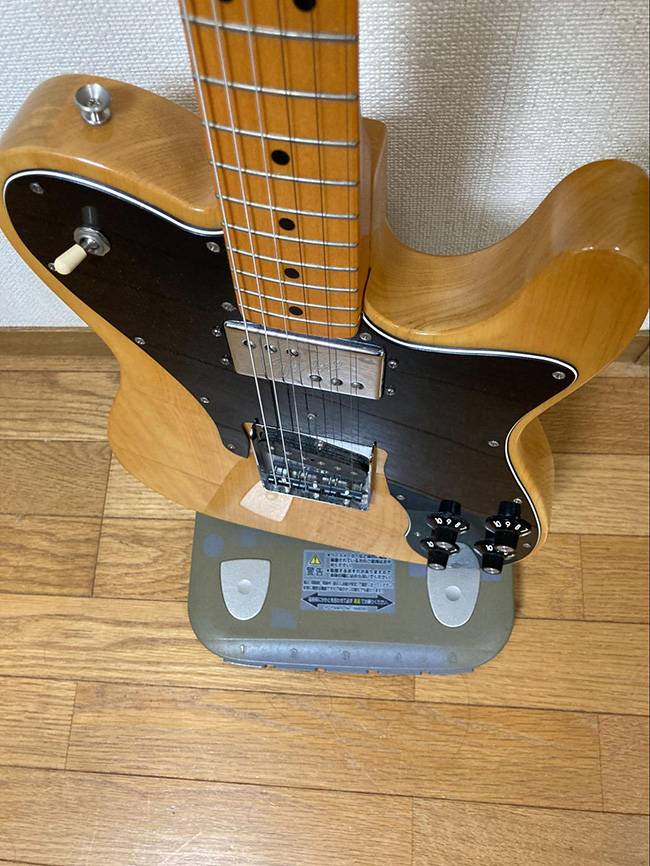
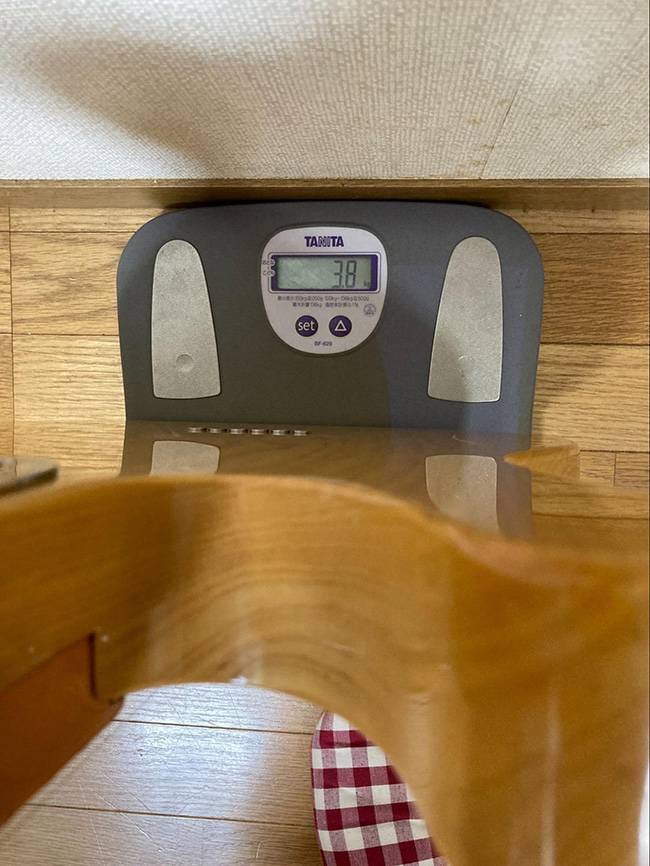
3.8! Kilograms... is that right?
Oh, wait a second. Could it be different depending on how I’m holding the guitar?
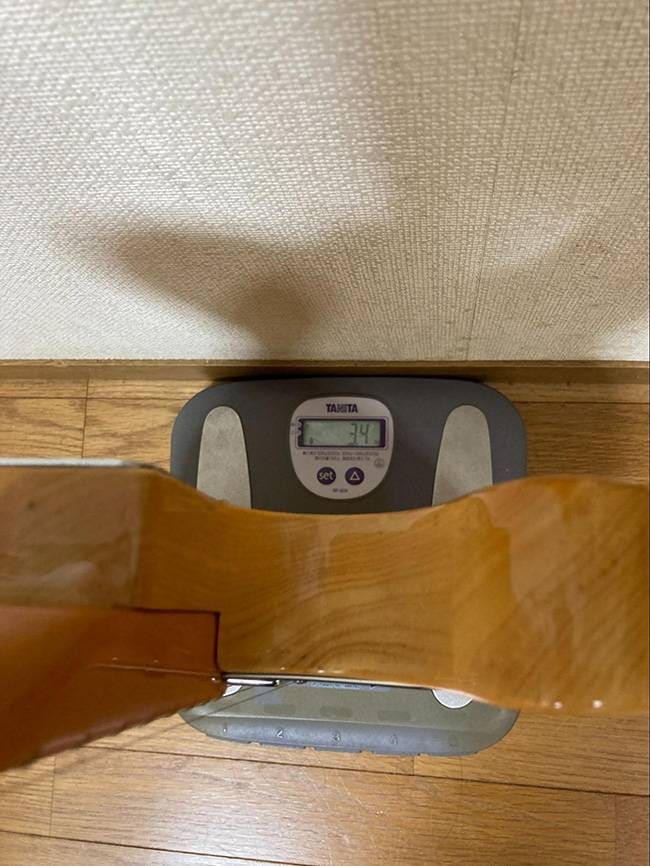
It’s 3.4! It really changes, huh...
So, after measuring a few times...
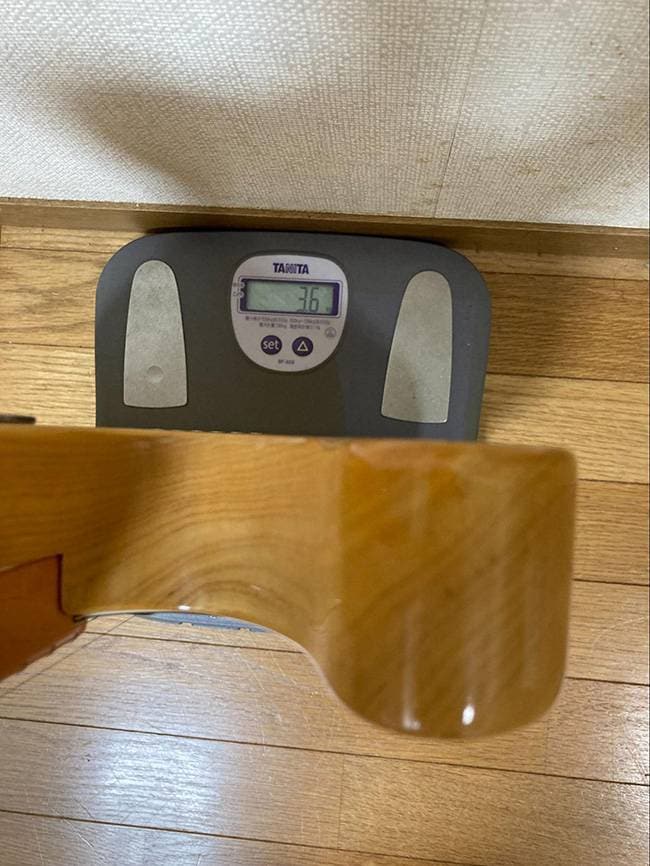
I see. Let’s take the average around here... but, is this method okay? It feels like it might lack accuracy... Well, let’s continue for now.
Alright! My Telecaster weighs 3.6 kilograms. Let’s remember that’s roughly the weight of two bottles of sake (1.8 liters)...
Sigh...
Or, you could think of it as about seven 500-milliliter bottles of water...
Either way works! So, is that heavy or light?
I’m not sure. That’s why I’m doing this as a free research project! Alright, let’s compare it with other guitars!
Next entry?
My favorite, the Squier Jazzmaster!
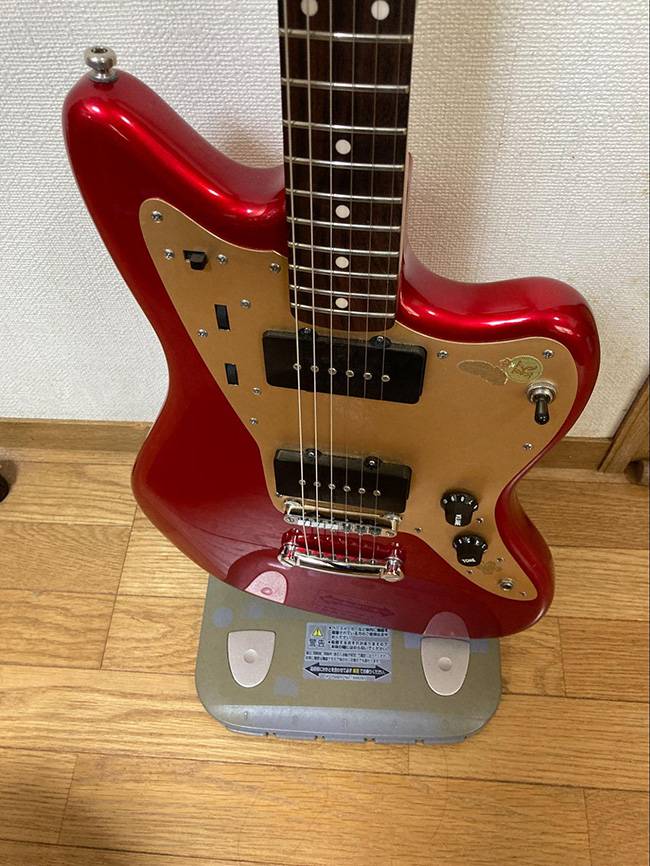
Since it has an asymmetrical body, it’s a bit tricky to balance when supporting it!
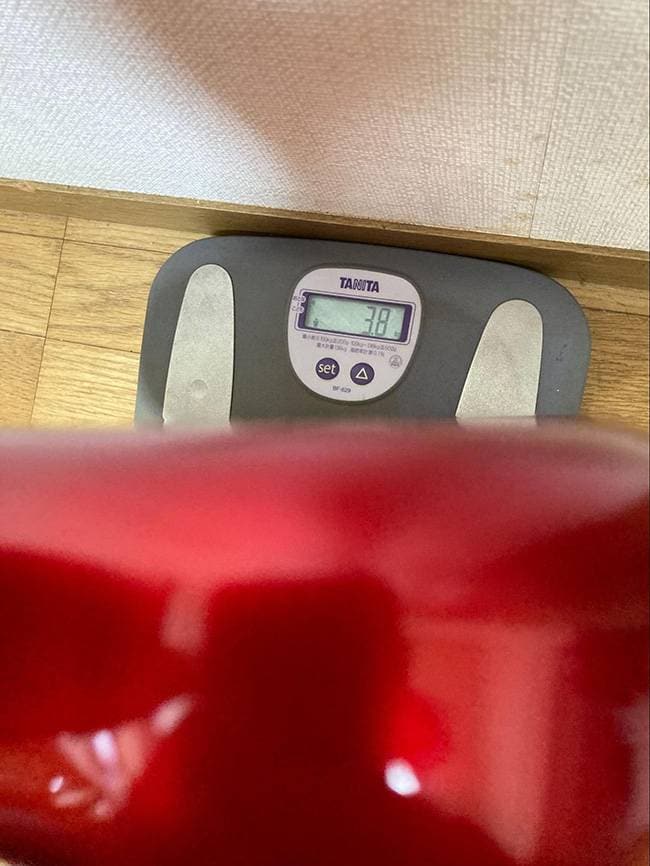
Oh, is it a bit heavier than the Telecaster?
Is it because the pickguard is made of aluminum?
Does the pickguard really make that much of a difference?
Ah! I made a mistake!
Hmm?
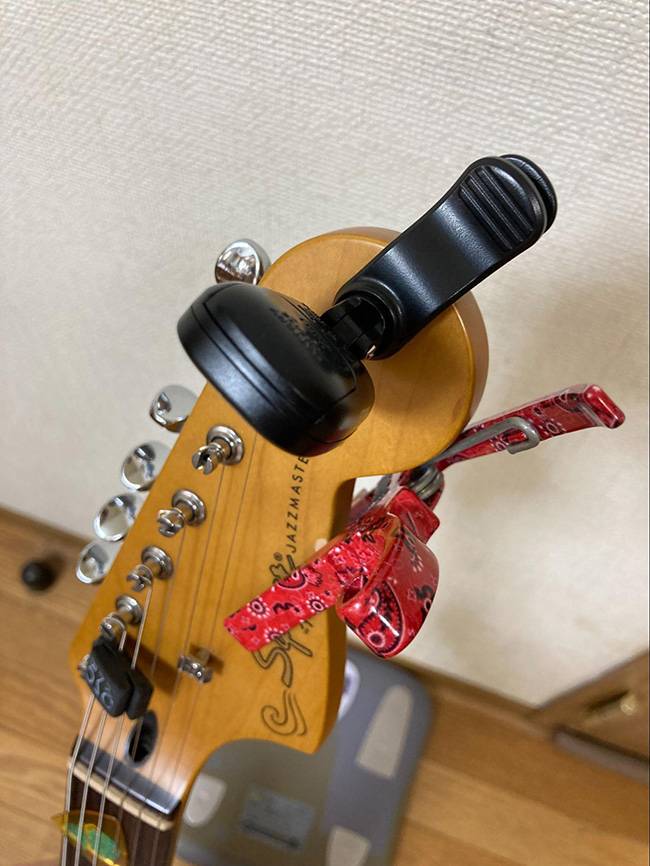
I measured it with the capo and tuner still on the headstock, my bad, I’m so sorry.
Was it really a mistake!?
Let me take them off... and measure again.
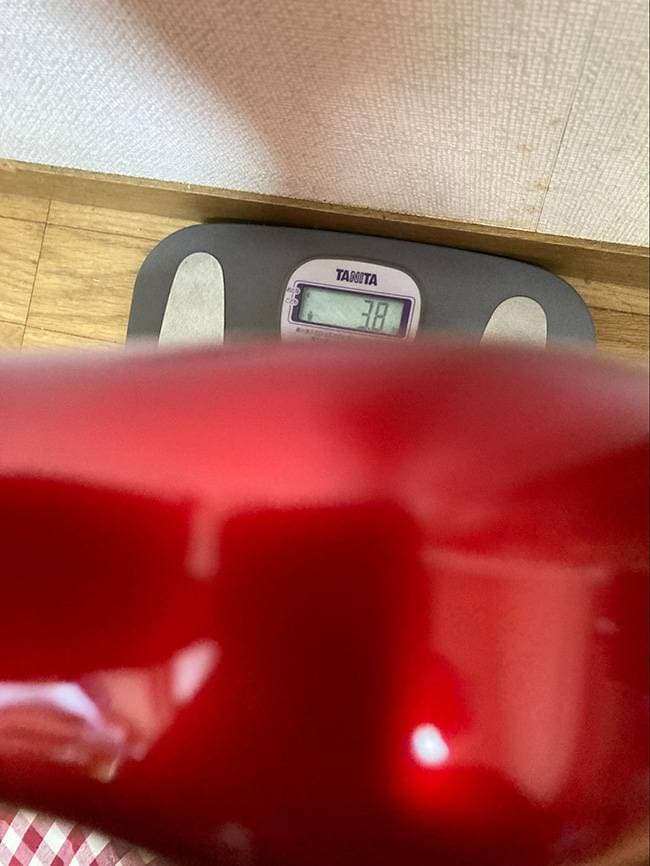
Huh?
It’s the same! No significant difference...
It’s a tiny difference, huh? Well, if the weight difference were more noticeable, it might affect playability. It probably wouldn’t cause head dropping, though.
Right. Now, next up! An acoustic guitar.
Which brand is it?
It’s a brand called Seagull. It has a slightly smaller body.
Alright, go ahead and measure it.
Hmm! Oh, I can tell just by holding it—it’s light...?
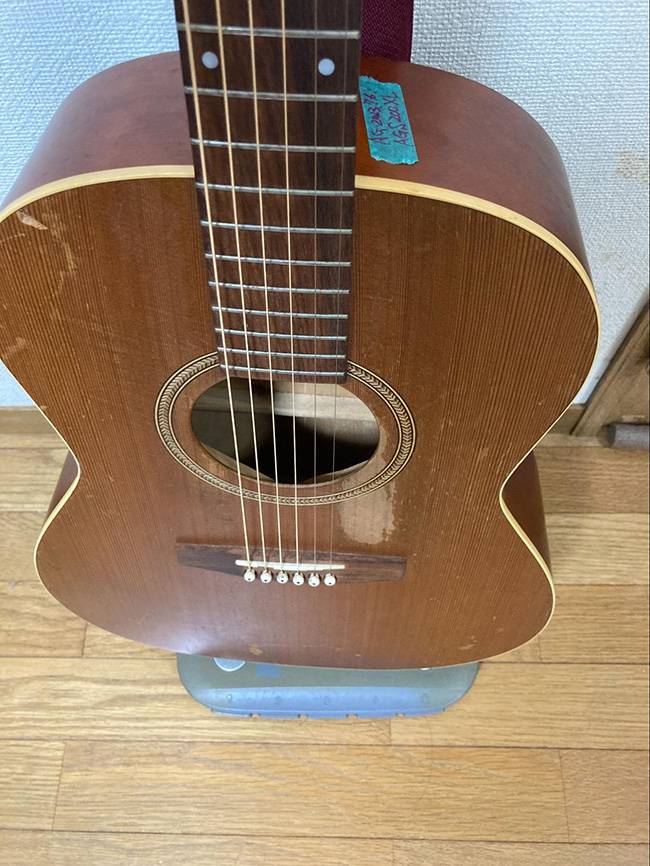
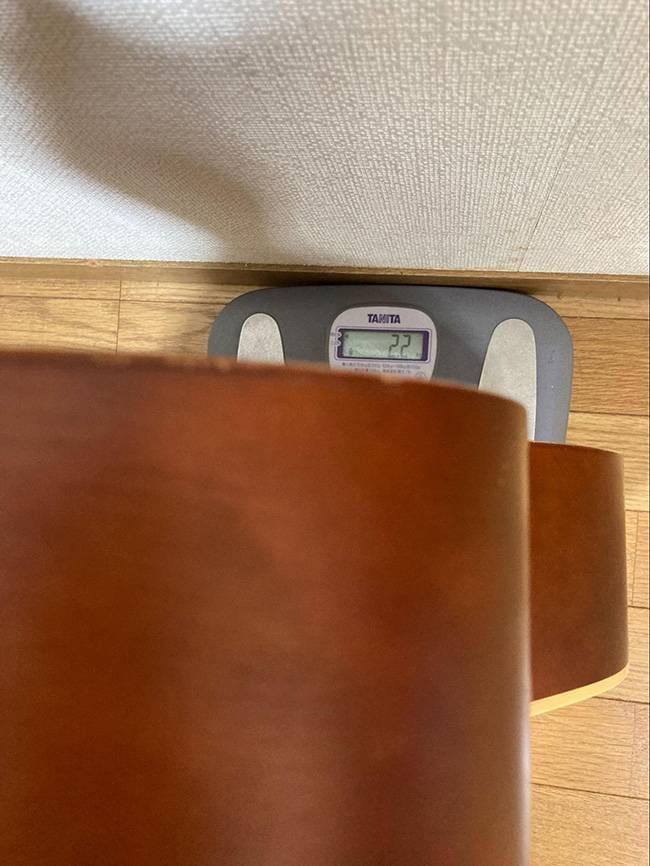
2.2 kilograms? Quite a bit different from the electric guitars!
It’s because the inside is hollow.
It doesn’t have pickups or electrical circuits, and the bridge and other parts seem lightweight too.
Right! Now, moving on to something cute!
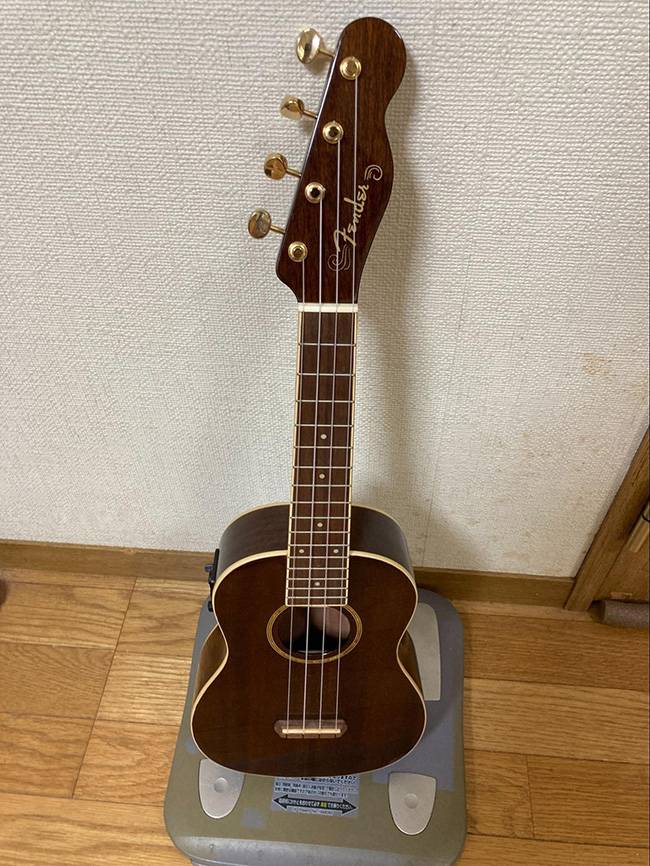
A ukulele!
It’s insanely light!
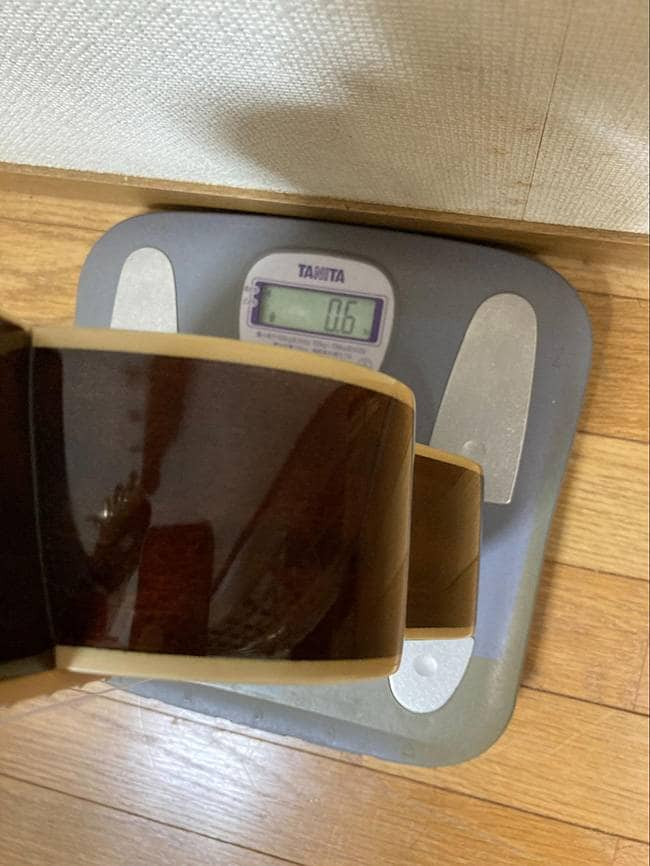
It’s under 1 kilogram!
Victory!
Congratulations... Well, you still have more, right?
Of course. Here’s another one, with a beautiful presence!
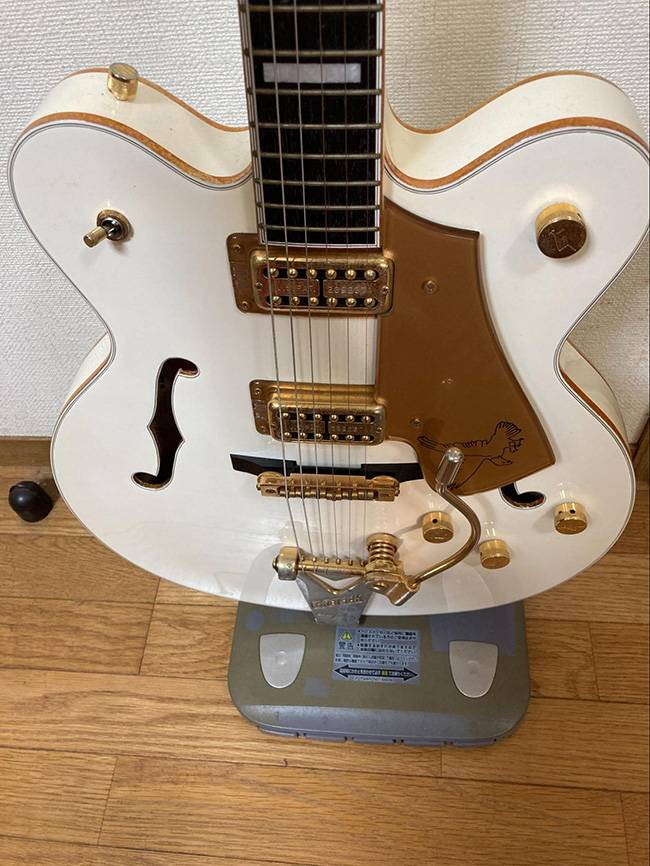
A White Falcon? Huh? Did you have one of these?
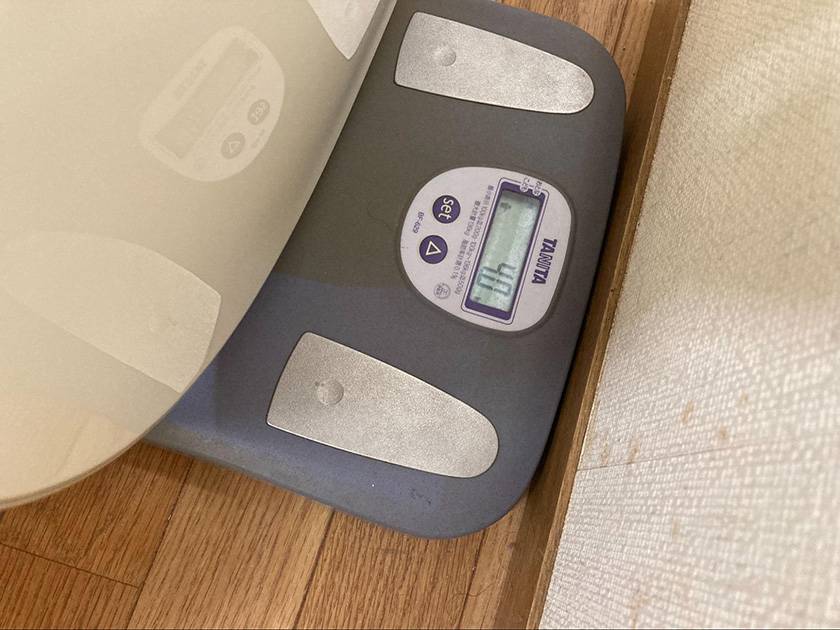
It’s actually a loan from a friend, but I thought I’d use it for the research. Semi-hollow? Fully hollow? I thought it’d be light because it’s a Falcon, you know, as light as feathers...
But surprisingly, it’s heavy... even more than a solid body.
Right... Maybe it feels lighter in terms of its bulk when holding it?
It’s starting to really feel like a proper research project... Is that it?
Wait, just one more guitar to add!
Go ahead.
This one!
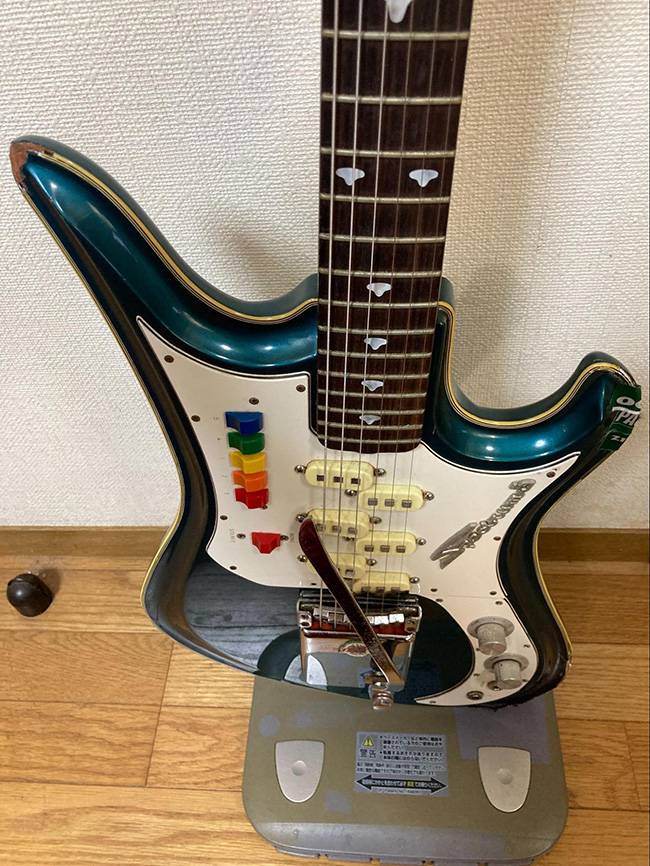
Here it is! The main guitar of Kizuhiko, the Teisco. This is a must-have. But, is the color a bit different from the usual one?
Sharp observation! You’re right! This one, I bought when I formed The Captains, my first Teisco! The fading looks great!
The parts and internal circuits look heavy...
And it has a lot of memories too...!
Ah... yes, right... Now, let’s measure it.
Let me see...?
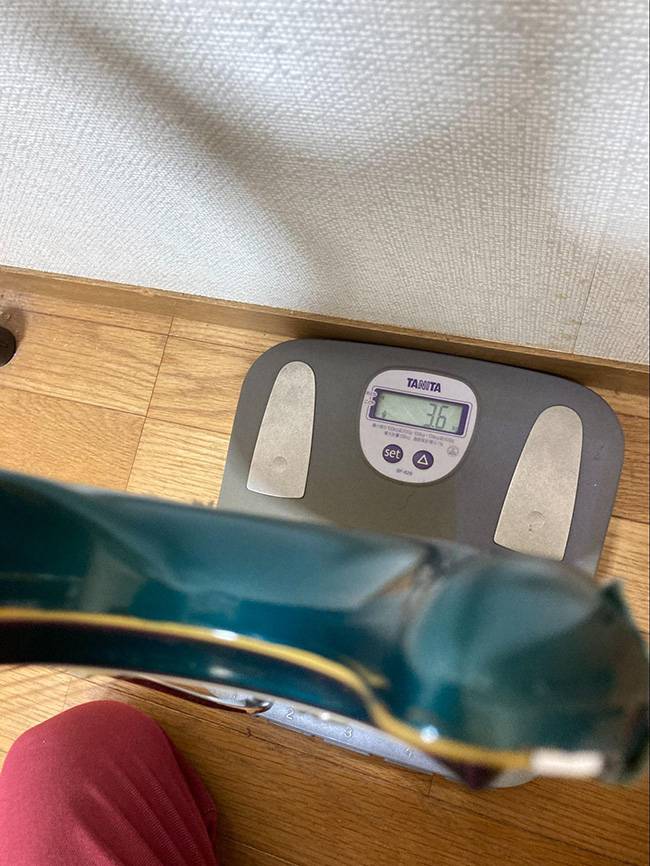
Not bad.
Not bad...?
All the electric guitars were about the same weight.
Maybe the Gretsch is heavier because the body is bigger? That was a bit of a surprise.
Me too.
So, what’s next?
Let’s measure the height!
If it’s the neck, there are official data releases with things like “long scale, XX inches”, but when you say height, are you referring to the full length including the body and head?
That’s right! From the body-end pin to the tip of the head!
I’ve never measured it before... Well, if you think about it, the weight and full length should also be part of the data release...
Well, since it's a free research project, we have to figure it out ourselves! I’ve got the tape measure ready, so let’s try it! First, the Telecaster Custom!
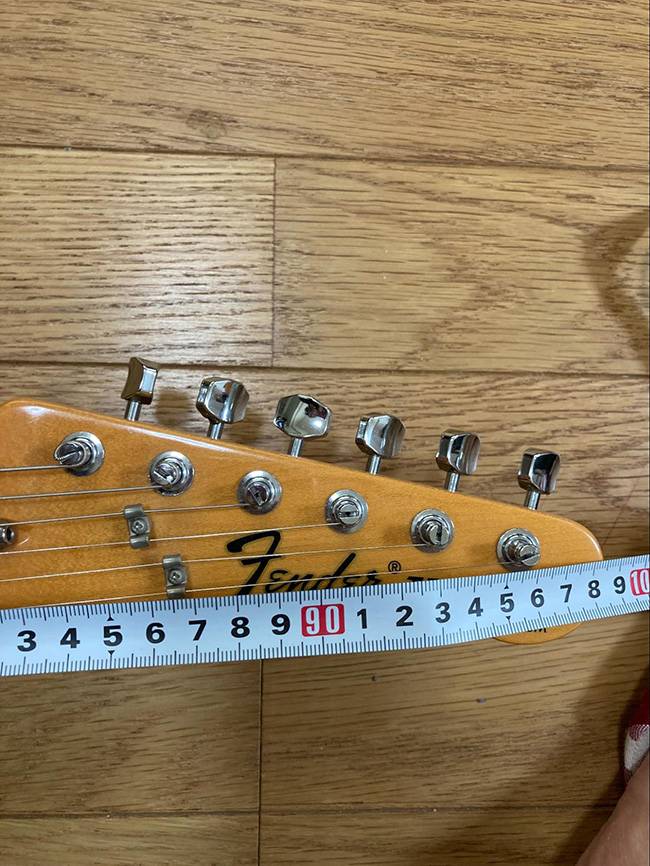
Is it about 99 cm?
So close, just 1 cm off.
Close? Is the goal to hit the 1-meter mark?
No particular reason! Next up! Jazzmaster!
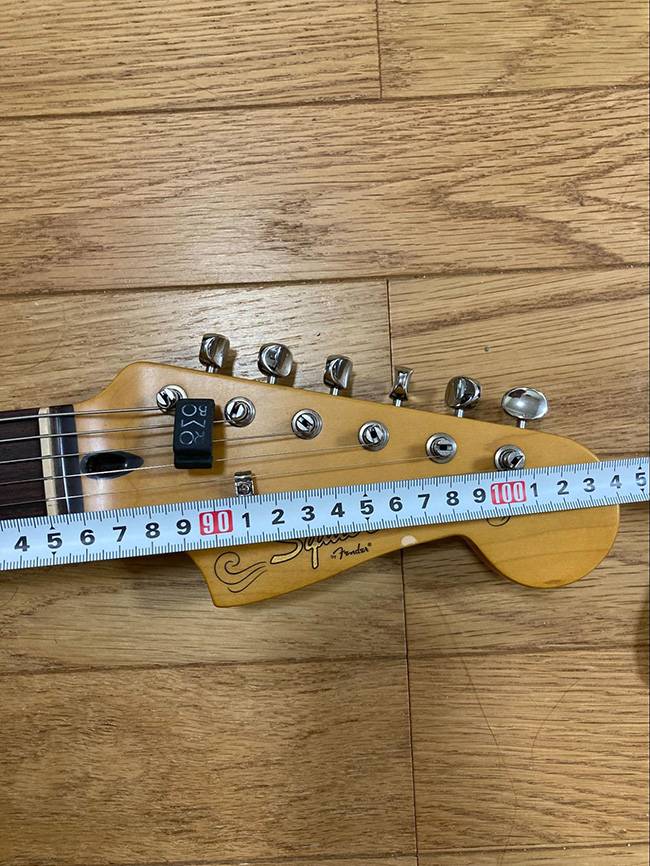
Oh. Record, 104 cm. We’ve crossed the big 100 cm mark!
Oh, you’re sounding like a judge from a competition! But honestly, I’ve never really felt such a height difference when playing.
I see.
When you line them up, it’s clear!
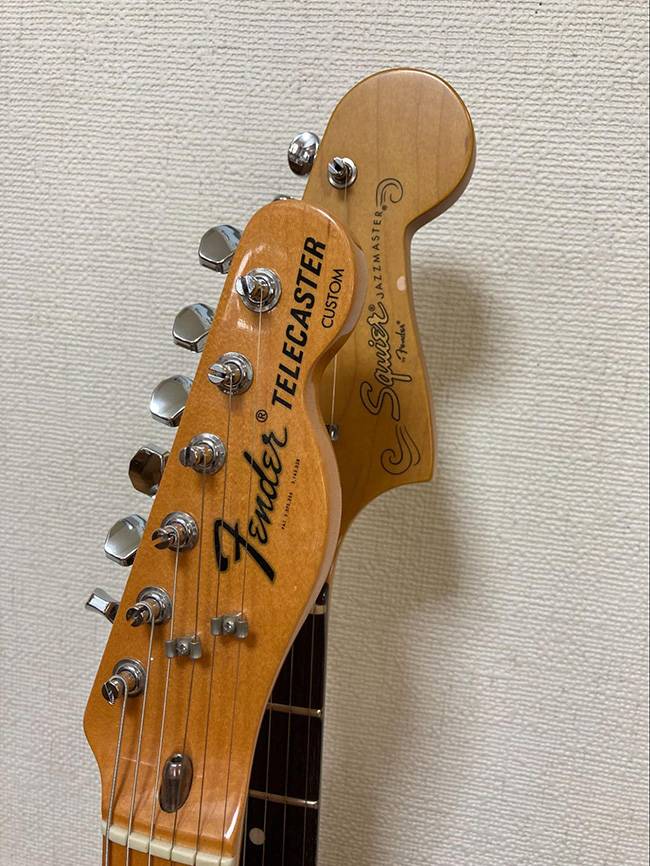
It really is! Well, with guitars and basses, the position of the strap pin can really affect how they feel to play. Even if the full length is long, the pin position might make it feel different... There’s a lot to realize!
Next, the acoustic guitar...?
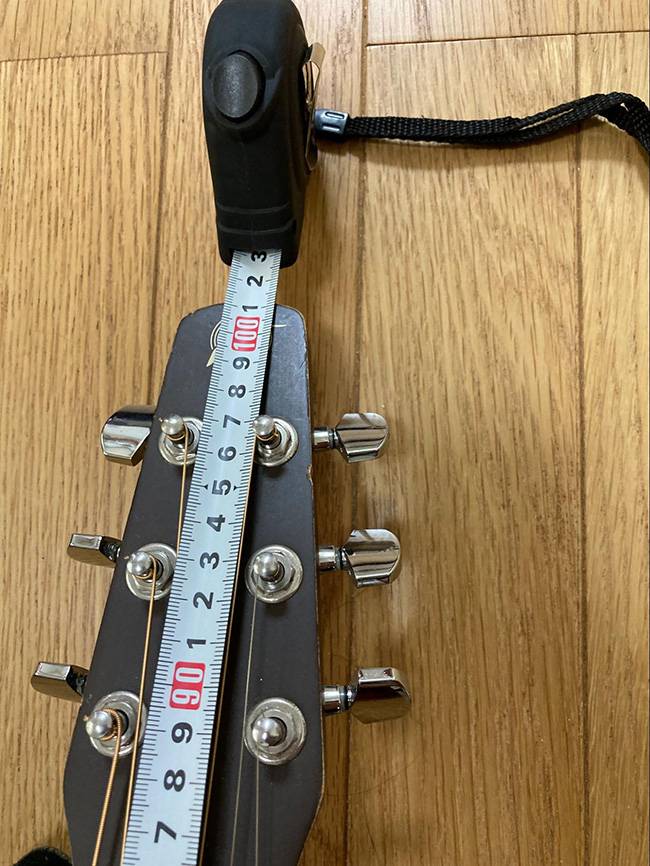
101 cm. For such a small body, it’s impressive to surpass the 100 cm mark.
Right? Next up, the little guy!
The little guy? The ukulele.
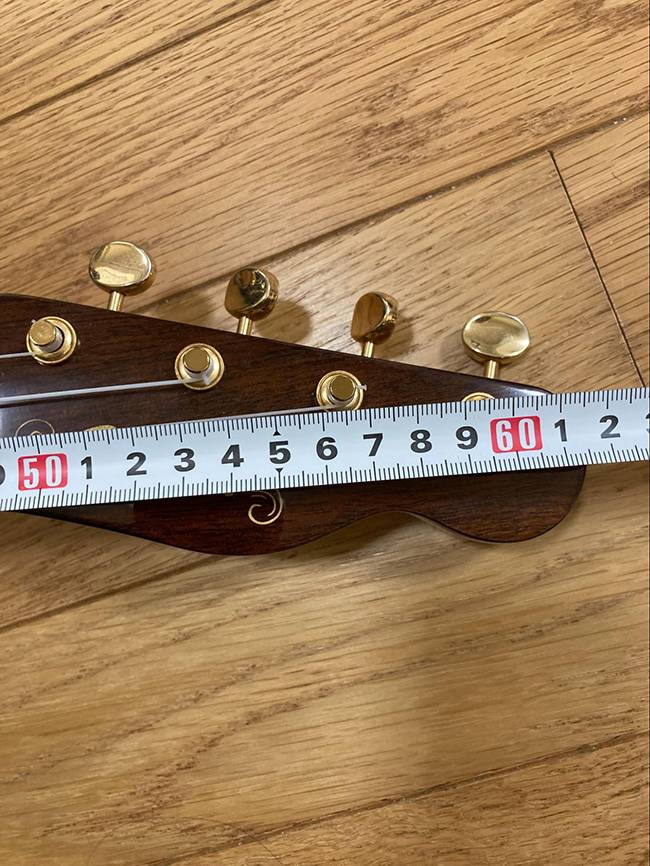
So tiny!
61 cm? It’s light, small, and the strings don’t rust, so it’s perfect for carrying around!
It’s the champion! Next up, the Gretsch!
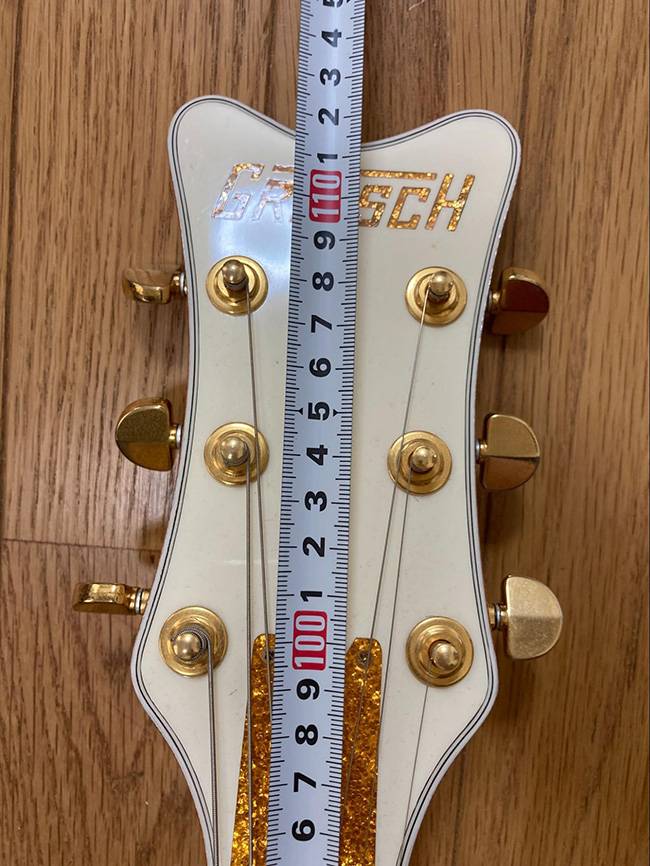
Oh, 112 cm... I think?
That’s big!
So that’s why it’s heavy. As expected.
Not suitable for carrying around. Finally, the Teisco!
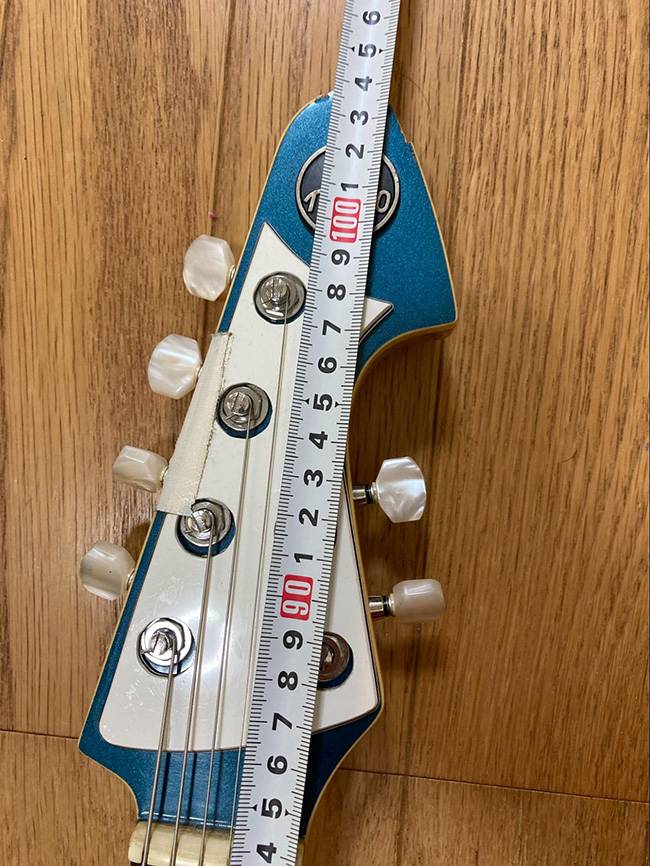
104 cm.
Phew, we measured a lot.
We really did measure a lot. Good job, everyone.
Wait a minute!
What’s up? Shouting like that?
Since it’s a special research project and we’ve already measured the height and weight...
So?
I want to calculate the BMI too!
Huh? BMI... what was that again?
Let me explain. According to a web search by Kizuhiko, “BMI is a number that can be expressed as weight in kg divided by the square of height in meters. It’s said that a BMI of 22 is when you’re least likely to suffer from conditions like high blood pressure, so a BMI of 22 is considered the standard weight. Up to a BMI of 25 is normal, but beyond that, it’s classified into levels of obesity, from obesity level 1 to obesity level 4.”
Oh, I see.
Horry’s BMI seems to be low.
Well, recently it’s not so much... but, is this based on humans?
Yeah! But let’s just try it. For the Telecaster Custom, it’s 3.6 kg divided by the square of 0.99 meters (which equals 0.98)?
What’s the result?
3.67!
Okay... this number... doesn’t really seem like it’s useful...
Yeah, true. What I really wanted was to say, “This guitar has the same BMI as that celebrity—time to eat more!” and get all excited about it.
“Time to eat more”!?
But I want to find meaning in this measurement!
Oh?
To put it simply, the overall length of an electric guitar is about 1 meter, and if it weighs over 4 kg, it’s considered heavy!
That’s really vague... I’m starting to lose track of the ‘meaning’.
Iiiiii! Next time, I want to try measuring a Les Paul and others!
There’s going to be a next time? You’re relentless... or rather, you’ve got an indomitable spirit.
I’ve been gravitating towards lighter guitars over the years, though.
I get it. That feeling... year by year, right?
I also learned that surprisingly, some hollow bodies are actually heavy.
Ah, that was unexpected. Just like how it was surprising that you owned a White Falcon. People who use semi-hollows might have known, but hollow bodies give off a light impression.
So, this neck is so heavy! I think you feel that more with denser materials. When the body is small but heavy!
That’s... true. I used to have one with an acrylic body. It was a Steinberger-type body made of acrylic. It was small but really heavy.
When the body is big, you brace yourself for it!
Even with that proud face... But doesn’t the weight of the instrument feel different depending on the strap you use?
Ah, that’s true. A wider strap distributes the weight on your shoulders more, so it might feel lighter than a narrower one.
Exactly. And there are also straps with padding... So, for people who feel their instrument is heavy, it might be a good idea to reconsider the strap they’re using, especially if they’re using a narrow one.
But... some people say narrower straps look cooler. Especially those influenced by Tomoyasu Hotei.
I get that... but let’s leave that up to individual taste. Also, as I mentioned earlier, the balance of the instrument changes depending on where you attach the strap, so for those who feel the balance isn’t quite right, it might be worth considering the position of the strap pins. Moving the pin location can be a bit of a hassle, though.
We also offer straps that reduce shoulder strain!
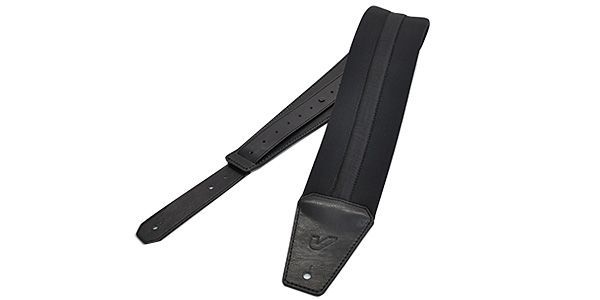
Wide Type
Gruv Gear / SoloStrap Neo 4.0 Black
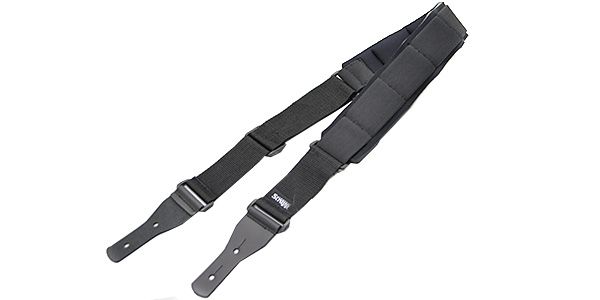
Narrow Type
Comfort Strapp / Pro Guitar Long 100-117cm
Also, through this research, we learned that even guitars from the same brand can vary quite a bit in size, right?
Well, yes, that’s true.
So naturally, the cases are different too.
Exactly. There are times when the case doesn’t fit due to slight differences in size. Always check the inner dimensions of the case.
This time we measured the total length, but the width is important too!
Indeed.
And more! For asymmetrical bodies, the protrusion of the horns is also important!
That sounds like a tricky measurement... Indeed, even a slight shape difference can prevent it from fitting in the case. When buying a new case, you have to be careful, especially if you like something a bit unique, like we do!
Especially my Teisco guitar, with its distinctive horn length – I’ve bought a case before, but the horns wouldn’t fit! For a while, I was carrying it with the horns sticking out...
That’s unfortunate... If you had checked in advance, it might have been preventable.
Right? Measuring is important, isn’t it? ...Yes, this experiment was definitely not in vain! Thank you! Because everything is?
For love!
The “sound & person” column is made up of contributions from you.
For details about contributing, click here.








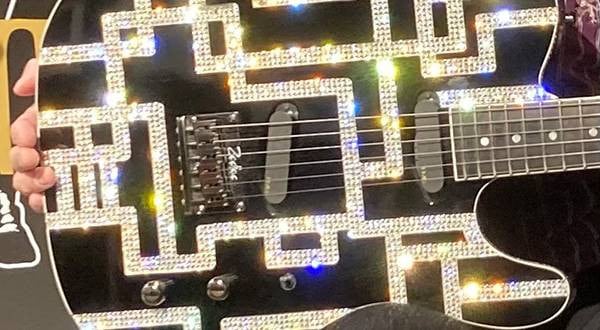
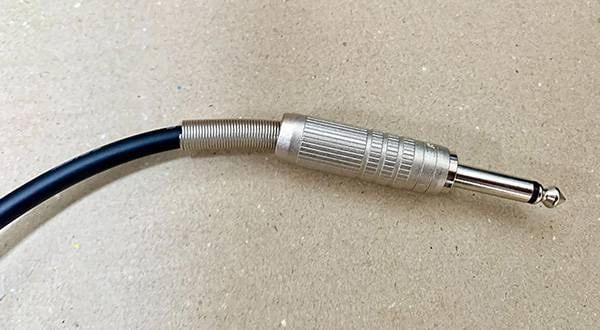

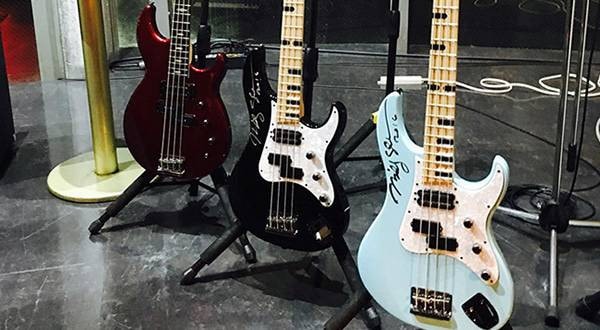

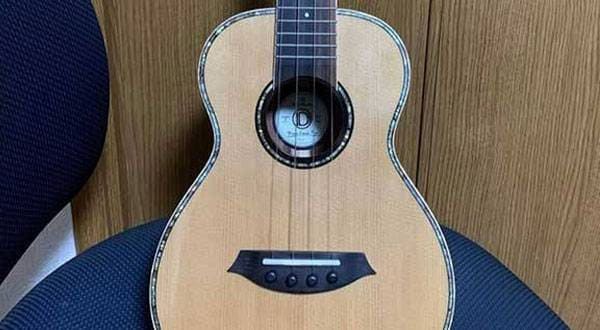


![[How to control the guitar like you want to] Things guitarists should know about their body](/contents/uploads/thumbs/5/2019/9/20190919_5_7689_1.jpg)
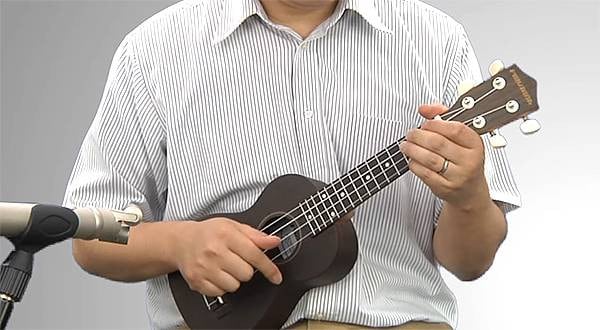
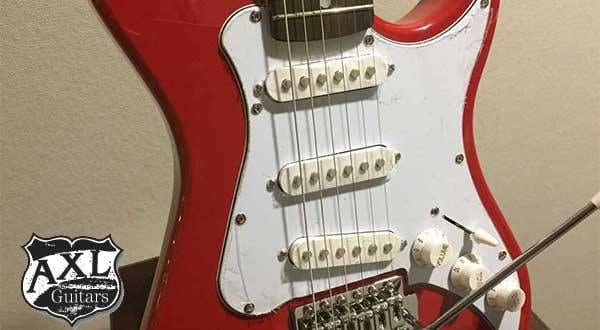
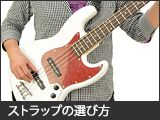 ストラップの選び方
ストラップの選び方
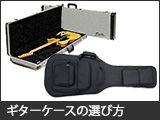 ギターケースの選び方
ギターケースの選び方
 ギタースタートガイド
ギタースタートガイド

